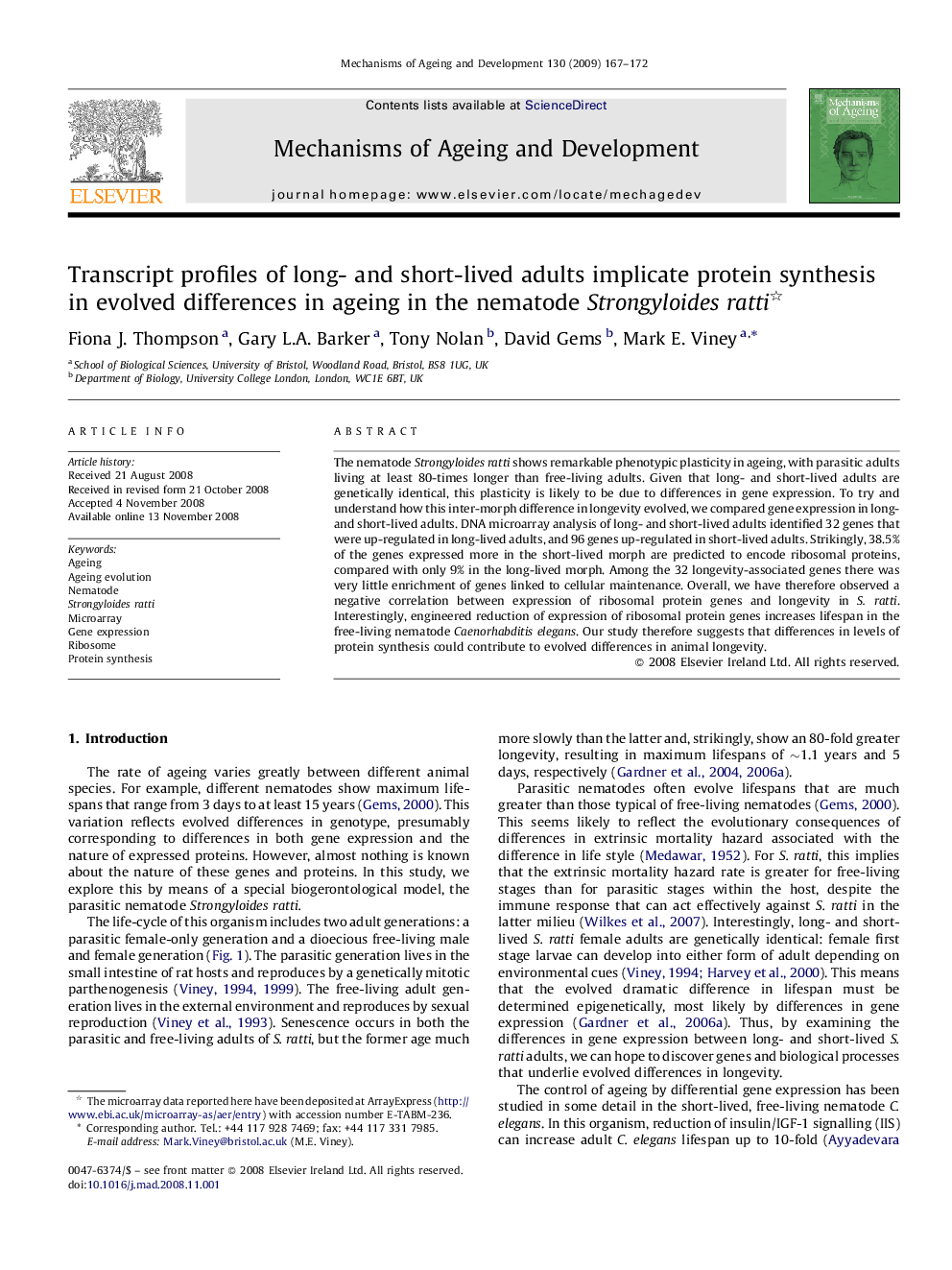| Article ID | Journal | Published Year | Pages | File Type |
|---|---|---|---|---|
| 1919781 | Mechanisms of Ageing and Development | 2009 | 6 Pages |
Abstract
The nematode Strongyloides ratti shows remarkable phenotypic plasticity in ageing, with parasitic adults living at least 80-times longer than free-living adults. Given that long- and short-lived adults are genetically identical, this plasticity is likely to be due to differences in gene expression. To try and understand how this inter-morph difference in longevity evolved, we compared gene expression in long- and short-lived adults. DNA microarray analysis of long- and short-lived adults identified 32 genes that were up-regulated in long-lived adults, and 96 genes up-regulated in short-lived adults. Strikingly, 38.5% of the genes expressed more in the short-lived morph are predicted to encode ribosomal proteins, compared with only 9% in the long-lived morph. Among the 32 longevity-associated genes there was very little enrichment of genes linked to cellular maintenance. Overall, we have therefore observed a negative correlation between expression of ribosomal protein genes and longevity in S. ratti. Interestingly, engineered reduction of expression of ribosomal protein genes increases lifespan in the free-living nematode Caenorhabditis elegans. Our study therefore suggests that differences in levels of protein synthesis could contribute to evolved differences in animal longevity.
Related Topics
Life Sciences
Biochemistry, Genetics and Molecular Biology
Ageing
Authors
Fiona J. Thompson, Gary L.A. Barker, Tony Nolan, David Gems, Mark E. Viney,
